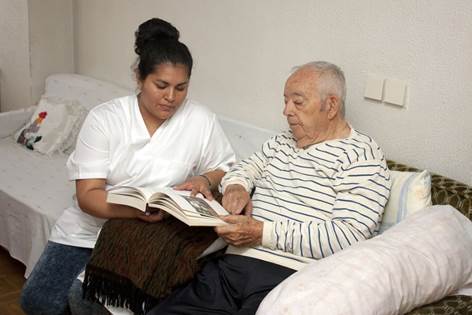Archives
Stopping Smoking Helps People Stay Sober and Keep Off Illicit Drugs
Substance abuse recovery is already a weighty task, but new research suggests that smokers have a greater risk of relapse than non-smokers.
 Researchers from Columbia University’s Mailman School of Public Health and the City University of New York studied data from 34,653 adults enrolled in the National Epidemiologic Survey on Alcohol and Related Conditions (NESARC) to determine how the lapse in nicotine dependence treatment during illicit substance use recovery affects those in treatment.
Researchers from Columbia University’s Mailman School of Public Health and the City University of New York studied data from 34,653 adults enrolled in the National Epidemiologic Survey on Alcohol and Related Conditions (NESARC) to determine how the lapse in nicotine dependence treatment during illicit substance use recovery affects those in treatment.
Researchers evaluated study participants at “two time points, three years apart, on substance use, substance use disorders, and related physical and mental disorders. Only those with a history of illicit substance use disorders according to specified criteria were included in the final sample.”
Findings indicated that “daily smokers and non-daily smokers had approximately twice the odds of relapsing to drug use at the end of the three-year period compared with nonsmokers.”
In addition to those findings, those non-smokers found to be smoking three years later “were associated with significantly greater odds of substance use disorders relapse compared to those who remained non-smokers.”
Based on the evidence, researchers surmised that “quitting smoking will improve anyone’s health”, but that those in treatment for illicit drug use stand an even greater benefit by quitting or not picking up the habit at all.
Smoking Cessation is Successful When Paired with Lung Screening
New preliminary evidence shows telehealth, or telephone-based smoking cessation counseling provided to smokers shortly after undergoing a lung cancer screening can be “effective at helping people stop smoking.”
 Lead researcher, Kathryn L. Taylor, PhD, a behavioral scientist and a professor of oncology at Georgetown Lombardi Comprehensive Cancer Center noted that the short period after receiving a screening is a prime example of a “teachable moment,” adding, “When smokers are thinking about their health and may be ready to make a change – offering help makes a difference, and may help save lives.”
Lead researcher, Kathryn L. Taylor, PhD, a behavioral scientist and a professor of oncology at Georgetown Lombardi Comprehensive Cancer Center noted that the short period after receiving a screening is a prime example of a “teachable moment,” adding, “When smokers are thinking about their health and may be ready to make a change – offering help makes a difference, and may help save lives.”
For those curious about how telephone-based counseling sessions work, the study provided participants with their first counseling session right after they received their screening results. Over the next three months, six 10-15 minute sessions were conducted. At the conclusion of the study, participants who said they had remained abstinent of smoking were given a nicotine saliva test to confirm their abstinence. “Researchers found that eight (17 percent) people in the telephone counseling group had verifiably quit, compared to two (4 percent) in the other group.”
According to the researchers, the study findings were “so promising that investigators have been funded through [National Institutes of Health (NIH)] to conduct a much larger study of telephone-based cessation counseling.” The addition of more study participants could help significantly increase a life-saving intervention mechanism.
New Treatment for Depressed Smokers Trying to Quit
New research is uncovering factors linking depressed smokers to more difficult resistance to relapses.
Researches are currently, “testing a new smoking cessation treatment, combining medication and behavioral activation therapy,” that is targeted towards depressed smokers, who are often omitted from smoking cessation clinical trials.
"People have thought for some time that depressed smokers have difficulty quitting because they experience a more pronounced withdrawal syndrome, but the evidence is scarce because depressed smokers are hard to recruit and consequently have not been as studied. But now we have gathered together convincing empirical support for this theory, which can be used to justify new treatment approaches," said Professor Lee Hogarth of the University of Exeter’s Psychology department and co-author of the paper.
 The senior author of the study, Professor Brian Hitman of the Northwestern University Feinberg School of Medicine claimed that this is the first targeted approach for depressed smokers that aids with smoking cessation.
The senior author of the study, Professor Brian Hitman of the Northwestern University Feinberg School of Medicine claimed that this is the first targeted approach for depressed smokers that aids with smoking cessation.
According to the study, depressed smokers encounter severe withdrawal states and symptoms that, “contribute to resumption of smoking, including low mood, difficulty engaging in rewarding activities and impaired thinking/memory.” Furthermore, depressed smokers often necessary lack coping techniques. Nicotine often helps to diminish these symptoms, which causes higher relapse rates among depressed individuals.
"Many smokers learn, 'If I smoke in this situation, my mood gets better.' But while smoking improves mood in the short term, it produces a long-term decline in mood," said lead author Amanda Mathew, research assistant professor in preventive medicine at Feinberg and a licensed clinical psychologist. "On the other hand, successfully quitting smoking is associated with improvements in mental health."
Adverse states that occur when depressed smokers attempt to quit include low levels of pleasure in rewarding activities, negative feelings and difficulty with concentrating and decision making.
Researchers are pairing Chantix and behavioral activation to improve concentration, memory and moods. It is believed that through these channels, relapse rates will decrease.
The study is occurring at Northwestern Memorial Hospital and the University of Pennsylvania and is currently accepting participants.
A Talk with a Nurse Can Persuade Hospital Patients to Quit Smoking
A new study, published in the American Journal of Preventative Medicine, shows that smoking cessation outcomes are doubled if hospital patients speak with a nurse or staff member trained in the most effective ways to coach patients on how to stop smoking and where to find additional resources and treatment options.
"They were armed with everything they needed when they left - medication, behavioral tactics, a manual to help them stay on track," said Sonia Duffy, a professor of nursing at The Ohio State University and lead author of the study. "Hospitalization is the perfect time to help people quit. They're more motivated and nurses can explain how smoking harms their health, including slowing healing."
The study focused on the self-reported and lab-confirmed quit rates of 1,528 patients in five Michigan community hospitals after six months of discharge. Three of the hospitals’ nurses had undergone a one-hour training for smoking cessation, met with patients at least once.
After the sixth month of being released, the study found that, “16.5 percent of the smokers from the intervention hospitals said they'd quit, compared to 5.7 percent from the other hospitals.”
 Duffy claims that smoking cessation techniques are not commonly taught in nursing schools and counseling for smoking cessation is “spotty” throughout U.S. hospitals. She also believes that nurses don’t always inform patients about counseling, but instead refer them to the Tobacco Quit Line. Instead, she says that smokers should be provided with a plan and tools while they are in the hospital to effectively enhance the chances of their success.
Duffy claims that smoking cessation techniques are not commonly taught in nursing schools and counseling for smoking cessation is “spotty” throughout U.S. hospitals. She also believes that nurses don’t always inform patients about counseling, but instead refer them to the Tobacco Quit Line. Instead, she says that smokers should be provided with a plan and tools while they are in the hospital to effectively enhance the chances of their success.
These “Tobacco Tactics” were developed to adhere to the Joint Commission standards, “which are currently voluntary, but are expected to become mandatory.”
At Tobacco Tactics hospitals, nurses spent an average of nine minutes with patients, while staff at the other two hospitals did not alter their approach to patient care. Nurses provided the most effective tools and quit-smoking aids for to smokers in the Tobacco Tactics hospitals based on their individual addiction and past attempts at quitting. Smoking cessation strategies were also taught to smokers, “including identifying triggers and planning strategies to manage cravings.”
Patients received a brochure and advice from a physician on quitting, as well as a card with the 1-800-QUIT-NOW Tobacco Quit Line number. Patients also had the option to view an informative video on quitting and read the Tobacco Tactics manual and a smoking cessation oriented magazine.
Study Finds Differing Treatment Options for Female Smokers
A recent study published in the journal, Nicotine and Tobacco Research, found that female smokers who were prescribed varenicline were more likely to quit smoking than those who were given bupropion or nicotine patches.
 The study, "Sex Differences in Smoking Cessation Pharmacotherapy Comparative Efficacy: A Network Meta-analysis," was led by researchers from The City College of New York’s Sophie Davis Biomedical Education/CUNY School of Medicine, Yale University, and Yeshiva University. Over 14,000 cigarette smokers participated in the clinical trial study. Unlike the female participants, male participants exhibited “no differences in the likelihood of successfully quitting smoking when given varenicline, bupropion or nicotine patch.” Previous research supported the evidence that medicine can aid in smoking cessation and that varenicline is the most effective medication for women.
The study, "Sex Differences in Smoking Cessation Pharmacotherapy Comparative Efficacy: A Network Meta-analysis," was led by researchers from The City College of New York’s Sophie Davis Biomedical Education/CUNY School of Medicine, Yale University, and Yeshiva University. Over 14,000 cigarette smokers participated in the clinical trial study. Unlike the female participants, male participants exhibited “no differences in the likelihood of successfully quitting smoking when given varenicline, bupropion or nicotine patch.” Previous research supported the evidence that medicine can aid in smoking cessation and that varenicline is the most effective medication for women.
"Before our study, research had shown that among the choices for medications for smokers who wanted to quit, varenicline was the clear winner when it came to promoting quitting," said Smith. "Our study shows this is clearly the case for women. The story seems less clear among men, who showed less of a difference when taking any of the three medications."
Approximately one in six adults smoke cigarettes in the United States, which contributes to 555,000 deaths per year. The U.S. Food and Drug Administration (FDA) had approved three prescription medications to aid with smoking cessation. These medications include nicotine replacement therapies, varenicline and bupropion.
Study Highlights Success of Ottawa Model for Smoking Cessation
Findings from a new study from the May/June issue of Annals of Family Medicine discusses the Ottawa Model for Smoking Cessation’s (OMSC) success, “in increasing rates of tobacco cessation treatment delivery,” when used in primary care practices. The study was conducted by 481 clinicians in 32 primary care practices in Ontario, Canada, with 3,870 participants.
The OMSC utilizes the three A’s model: “Ask (identify smoking status), Advise (counsel patients to quit smoking) and Act (assist with cessation).” The study revealed that there was an increase of delivery rates of the three A’s. “(Ask: from 55 percent to 71 percent; Advise: from 46 percent to 64 percent; Act: from 35 percent to 54 percent).”
Researchers also discovered that implementing over eight of the 10 OMSC best practices correlated with the increased delivery rates of the three A’s. This signified the importance of solely using the implementation model.
 The study also revealed that physicians may not be fully utilizing opportunities to screen their patients for tobacco use, as clinicians tended to discuss tobacco use more often during period exams.
The study also revealed that physicians may not be fully utilizing opportunities to screen their patients for tobacco use, as clinicians tended to discuss tobacco use more often during period exams.
Lead study author, Sophia Papadakis, Ph.D., explains that, “the involvement of non-physician staff in a team approach to smoking cessation as well as use of electronic medical record prompts are two of the intervention strategies that appear to be important.”
Additionally, the study found evidence, “multicomponent tobacco cessation interventions are effective in primary care settings.”
The OMSC was created in the early 2000’s and included 21 hospitals in the Ottawa region and is now being used in 68 Ontario hospitals. The model is structured after the University of Ottawa Heart Institute’s approach to, “to document the smoking status of all admitted cardiovascular patients and ensure 98 percent of hospitalized patients who smoke receive bedside smoking cessation interventions from staff and follow up after they are discharged.”
Papadakis and her team also identified key barriers that impact physicians’ abilities to administer evidence-based tobacco cessation treatment, which include time, confidence and understanding.
The Ask and Act tobaccos cessation program is provided to family physicians by the AAFP. This program, “encourages family physicians to ask all patients about tobacco use and then act to help them quit.” A toolkit was also created for family physicians and their patients to provide information about tobacco and nicotine cessation resources.
Through current research, Papadakis continues to make improvements of the OMSC intervention program in hopes to lower the usage of tobacco.
Click Here to Access the Full Article from American Academy of Family Physicians
Offer Smoking Cessation Help with Lung Cancer Screening for Patients Who Smoke
A new recommendation from US Preventive Services Task Force is encouraging heavy smokers to undergo a yearly screening for lung cancer, based on findings from a recent study citing evidence-based behavioral strategies should be used, at each visit, to motivate smokers to quit. As an added bonus, the Centers for Medicare and Medicaid Services (CMS) has also “approved lung cancer screenings as a preventive service benefit.”
 “Lung screening with low-dose CT will save many lives by detecting lung cancer at earlier, treatable stages," explained Benjamin A. Toll, PhD, associate professor of public health at the Medical University of South Carolina (MUSC), and coauthor of the study.
“Lung screening with low-dose CT will save many lives by detecting lung cancer at earlier, treatable stages," explained Benjamin A. Toll, PhD, associate professor of public health at the Medical University of South Carolina (MUSC), and coauthor of the study.
Toll adds that, in order to be successful, the strategy is must be two-fold – tobacco treatment must be used in conjunction with lung screening to see positive results. It is also recommended that all smokers be given access to evidence-based interventions, supported with follow-up contacts to ensure all necessary steps are being taken in order to quit.
By combining all of these strategies, patients are most likely to maximize the benefits or screening and even quit the habit altogether.
Click Here to Access the Full Story from Oncology Nurse Advisor
FDA Takes Steps to Protect Americans from Dangers of Tobacco with New Regulations
It has been well documented that tobacco products can lead to lung diseases and conditions, including emphysema and chronic obstructive pulmonary disease (COPD), but now the Food and Drug Administration (FDA) is taking a stand against previously unregulated tobacco product, such as e-cigarettes.
In a new set of regulations released by the FDA in early May, a rule has been extended to include oversight of all tobacco products, allowing the agency to address public health concerns such as youth access to tobacco products.
Prior to this new regulation, there was no federal law prohibiting retailers from selling e-cigarettes, hookah tobacco or cigars to people under age 18, which created an even larger significant public health threat. The rule is set to go into effect in August and will include:
- Not allowing products to be sold to persons under the age of 18 years (both in person and online);
- Requiring age verification by photo ID;
- Not allowing the selling of covered tobacco products in vending machines (unless in an adult-only facility); and
- Not allowing the distribution of free samples.
Additionally, manufacturers, retailers and importers are also under stricter regulations including:
- Registering manufacturing establishments and providing product listings to the FDA;
- Reporting ingredients, and harmful and potentially harmful constituents;
- Requiring premarket review and authorization of new tobacco products by the FDA;
- Placing health warnings on product packages and advertisements; and
- Not selling modified risk tobacco products (including those described as “light,” “low,” or “mild”) unless authorized by the FDA.
With these new regulations in place, it is the hope of the FDA, federal government, and public health community to protect the American people from the harm of tobacco products, especially adolescents, who have been particularly targeted by the marketing campaigns of e-cigarette manufacturers and retailers.
Click Here to Access the Full Story from the Food and Drug Administration
New Research Finds “Best Option” for Kicking Smoking Habit
 New research published in Annals of Internal Medicine reports that quitting smoking using the “cold turkey” technique, or quitting all at once, is the best way to kick the habit. According to the study, 22 percent of participants who went cold turkey remained abstinent at the six-month mark, compared to just 15 percent of the gradual group participants.
New research published in Annals of Internal Medicine reports that quitting smoking using the “cold turkey” technique, or quitting all at once, is the best way to kick the habit. According to the study, 22 percent of participants who went cold turkey remained abstinent at the six-month mark, compared to just 15 percent of the gradual group participants.
These results are impressive considering the many people claim that choosing one particular day to quit is a daunting task, despite the American Cancer Society’s guidelines that suggest a quit date. While cutting back gradually can work for some people, it often leaves room for increased cravings which can impede the work put into quitting, but there is still hope. They key is taking the first step.
"The people who did make a quit attempt were as likely to stay quit whatever group they were in. Based on this we have suggested that people who reduce their smoking before quitting find the experience of cutting down difficult and this causes them discomfort, like cravings, which ultimately may put them off quitting altogether,” said lead study researcher Dr. Nicola Lindson-Hawley.
It is important to remember though, as noted in the study, that “gradual reduction may encourage smokers, perhaps those less motivated, or those with lower self-efficacy, to make a quit attempt." So, an attempt to jump right in and quit cold turkey may be the best choice, as evidenced by this study.
Text-message Reminders Associated with Improved Smoking Cessation
 According to a recent study conducted amongst Swedish university students who smoked cigarettes and were interested in quitting, text messaging was the most successful and effective tool for promoting smoking cessation.
According to a recent study conducted amongst Swedish university students who smoked cigarettes and were interested in quitting, text messaging was the most successful and effective tool for promoting smoking cessation.
A program called NEXit (NicotineExit), which sends motivational SMS text messages, “doubled the rate of self-reported smoking abstinence and improved complete smoking cessation.” How do these motivation text messages work to lower the rate of which young adults smoke? It’s fairly simple.
All college and university students throughout Sweden were contacted by email about the study. Based on the participants that responded (1,590), text messages with a motivational phrase were sent over a 12-week period. During this period, researchers saw eight weeks of prolonged abstinence was achieved by 25.9% of the intervention group, compared to just 14.6% of the control group. These messages showed that there was a high follow-up rate and participants were encouraged by results seen while using the program.
Study investigators concluded that the results observed in the trial were “comparable with those for traditional smoking cessation interventions.” Additionally, NEXit’s digital intervention has “the potential to improve the uptake of effective smoking cessation interventions.”
Click Here to Access the Full Study from the American College of Cardiology




